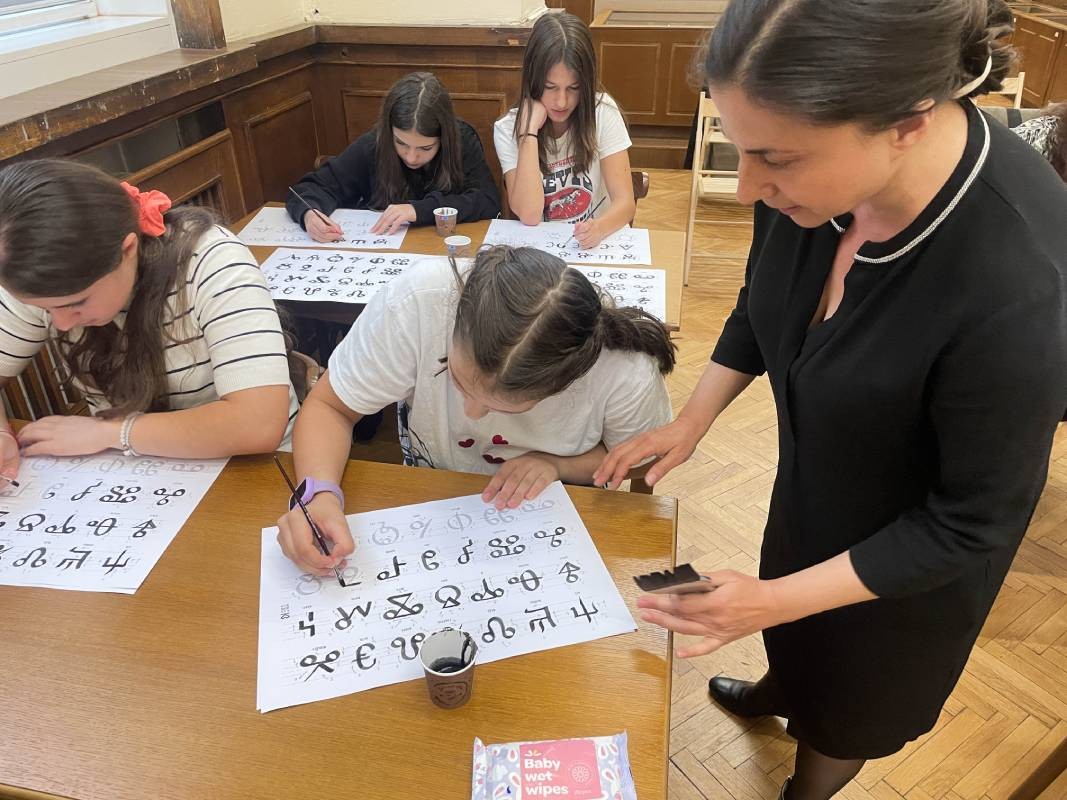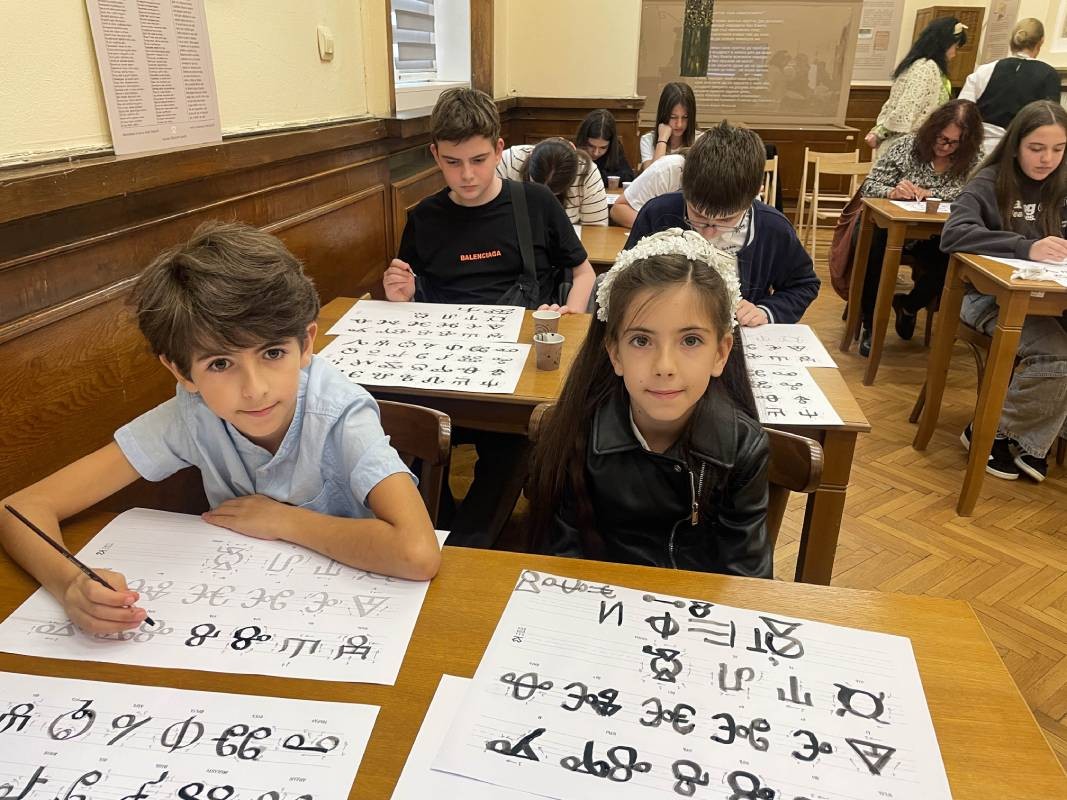In 2025, Bulgaria celebrates 1170 years since the creation of the Glagolitic script – the first Slavic alphabet that preceded the Cyrillic alphabet. On this occasion, the National Library organizes special workshops "I Write in Glagolitic", in which children from 1st to 4th grade, with the help of experts and artists, get acquainted with the unique graphemes of the Glagolitic script. "Following the prevailing opinion of scientists, we accept that the year 6363 after the Creation according to the Byzantine calendar indicated by the medieval cleric and writer Chernorizets Hrabar corresponds to 855 AD, i.e. 1170 years ago," Dr. Iveta Rasheva, editor-in-chief of the "Library" magazine at the National Library in Sofia, told Radio Bulgaria and added:

"That's why I suggested that we celebrate the Year of the Glagolitic script and hold a series of workshops called ‘I Write in Glagolitic’ aimed at children from 1st to 4th grade. At the beginning they learn when the alphabet was created, when the students of Cyril and Methodius came to Bulgaria, when Bulgaria adopted Christianity. If you ask a random person on the street, they are often confused if Glagolitic was the first Slavic alphabet? Glagolitic is first."
By the end of the year, the National Library will hold a total of 4 workshops "I Write in Glagolitic". The initiative gives children the opportunity not only to get acquainted with the ancient letters, but also to try writing them in calligraphic style. Through playing and creativity, the young participants also learn about important moments from the history of Slavic writing. "The Glagolitic alphabet was created by order of Prince Rostislav of Great Moravia, so that Christianity, the idea of this unique monotheistic religion, could be understood by pagans," Dr. Iveta Rasheva says and adds:

"In the 9th century, the trilingual dogma existed i.e. only Latin, ancient Greek and ancient Hebrew were sacred. That is why Cyril and Methodius used three sacred signs when creating the Glagolitic alphabet – a cross, a triangle and a circle. The cross is the sign of Christianity, the triangle – the sign of the Holy Trinity, the Father and the Holy Spirit, and the circle – the sign of the universe as a whole. And when the letters are composed of such sacred signs, it would be much more difficult for this alphabet to be rejected. On the contrary, it would be able to compete with the others, which were allowed to glorify God."
Dr. Iveta Rasheva recalls that after persecutions, the students of Cyril and Methodius found safety in Bulgaria, where the Glagolitic script received its “second homeland." Translations of liturgical books and transcriptions of ancient texts started. “Writing in Glagolitic is very difficult. Each grapheme requires writing these signs in a combination of the circle, triangle and cross, in a square. This is calligraphy," Dr. Rasheva says. Later, Kliment Ohridski, one of the best students of Cyril and Methodius, probably perfected the signs and formed the foundations of the modern Cyrillic script.

"The children are very happy! For them, the Glagolitic script is even a kind of cryptography as they have not written with Glagolitic letters until now. This is not included in their curriculum. The primer starts with the Cyrillic alphabet, but perhaps this is an omission. Perhaps the writing of several Glagolitic letters should really be included. The children really want to write their names and really want to use the numerical value of the Glagolitic graphemes, i.e. to write years with them. It is more mysterious, more magical for them," Dr. Iveta Rasheva concludes.
Read also:
Author: Veneta Nikolova
Photos: Veneta Nikolova
Publication in English: Alexander Markov
The Bulgarian minority in Romania marked a significant event with the official opening of the Bulgarian Inn in the village of Izvoarele (Hanul Bilgarilor), Teleorman County (Southern Romania)- a locality with Bulgarian roots dating back over 200 years...
The 14th edition of DiVino.Taste, Bulgaria’s leading forum for wines and winemakers, will take place from 28 to 30 November at the Inter Expo Centre in Sofia. Over 80 producers from all wine regions will participate, offering tastings of around 600 of the..
Minutes before the second and final reading, at the parliamentary budget and finance committee, of the state budget for 2026, the leader of the biggest party represented in parliament GERB Boyko Borissov halted the procedure and sent the draft bill..

+359 2 9336 661
